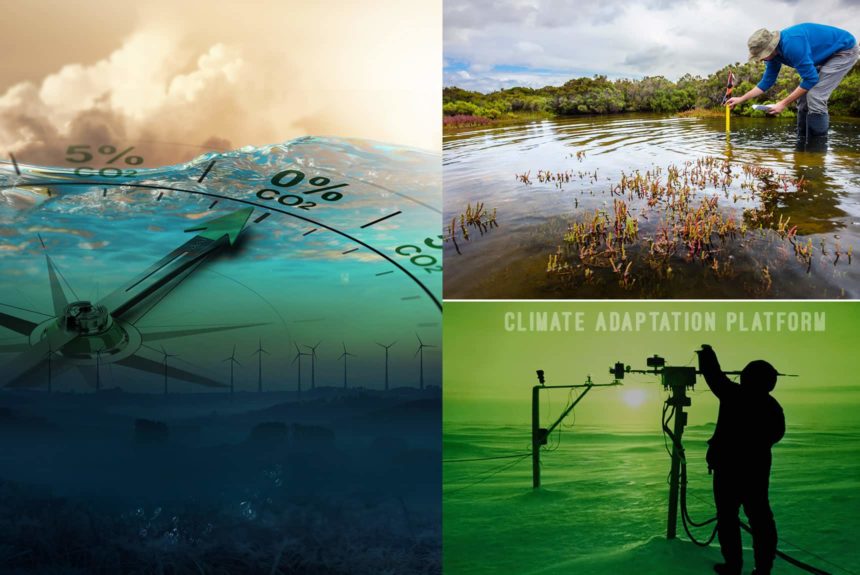Fighting climate change involves curbing our emissions to the point of net-zero by 2050, a goal agreed upon by all parties at the Paris Agreement. Achieving this target will require the rapid deployment of clean energy technologies.
A report by Elsevier published on October 20201, “Pathways to Net Zero, The Impact of Clean Energy“, aims to advance the understanding of research and innovation in clean energy and how it supports the drive towards a net-zero future.
The report is based on a study analysing more than 1.6 million papers from Elsevier’s Scopus database to examine the role of research over the last 20 years to accelerate climate mitigation efforts and provide expert insights into potential pathways forward.
According to the report, to avoid the worst impacts of climate change, the Paris Agreement set out a global warming limit of 2°C or below, compared to preindustrial levels, which all parties agreed to during the Paris Climate Conference (COP21) in December 2015.
Achieving this will require countries to become net-zero – “a point representing the balance between unavoidable GHG emissions and their removal from the atmosphere, through reforestation or carbon capture and storage technologies” by the agreed deadline of 2050.
Countries will have to develop and deploy clean energy technologies by this time. But in practical terms achieving net-zero is a two-pronged approach – curbing human-caused emissions and removing carbon from the atmosphere.
The scope of research in developing and deploying clean energy is wide. It covers solar, wind, bioenergy, and other clean energy sources, the economics of electric power systems, infrastructure, energy storage, batteries for electric vehicles, smart home technologies, data security, and privacy, and a lot more.
While these initiatives play a critical role in achieving net-zero emissions, the engagement from corporations, governmental policies, and intergovernmental agreement and buy-in from the public is equally important.
Key findings from the report:
In the last 20 years (between 2001 and 2020), research publications in curbing emissions, carbon removal, carbon capture and storage, clean energy, and innovation towards achieving a net-zero future, referred to by this report as NØEnergy research, has grown rapidly.
China’s research output has increased each year since 2001 and overtook the US in 2012. The United States, still a strong player in the field, has seen a dip in their publication in the last two decades
NØEnergy research has gone beyond traditional individual discipline to encompass much broader expertise and knowledge, emphasising the importance of a multidisciplinary approach.
International collaboration has increased from just over 30% in 2011 to 45% in 2020, which is a positive sign as challenges are global, and international collaboration enable shared learning and have a greater impact.
Although the outlook and reach of NØEnergy research must be global, analysis from the report finds that only a small proportion of research in the field is conducted in and for the Global South – or countries identified by the World Bank as Upper-Middle-Income, Lower-Middle-Income, and Low-Income countries who are disproportionately affected by climate change least able to adapt to it.
NØEnergy research has transitioned from basic to applied research by more than 20%, which is expected from a field that needs to translate knowledge into practical application. Singapore has the largest share of basic NØEnergy research. South Korea and Japan are more focused on applied research, and Denmark has the largest share of publications in applied technology.
The maturity level of clean energy technologies and their evolution shows that subfields of NØEnergy research like electrical energy transport and distribution systems are highly practical and centre on applied technology; other areas like EV batteries and energy storage are still applied research stage.
The transition of research to the deployment of near- or midterm technologies relies heavily on the corporate sector.
The connection between academic and corporate research and patenting gives insight into how well NØEnergy research is transitioning to deployable technologies. Collaboration between academia and industry has increased in the last 20 years, with Switzerland and Netherlands as leaders in the share or co-publications and China at the heels.
The United States, Japan, and Germany dominate in patenting clean energy technologies, with China following closely. By 2020, total active patents in the field reach 800,00, with the last ten years seeing exponential growth driven to a great extent by China’s effort.
Finally, though climate change requires urgent action, the report finds that NØEnergy research only receives slightly more attention from policymakers and a wider online audience than other research areas. But the good news is this research finds its way to international policies and organisations such as the World Bank, IPCC, and Wuppertal Institut.
To carry out the societal change needed to reach the net-zero goal by the deadline will require the research community, funders, policymakers and other stakeholders to zero in on topics with societal relevance and communicate the impact of research more clearly.
Kumsal Bayazit, CEO of Elseviers, points to lagging collaboration between the Global North and developing countries of the Global South, which is more vulnerable to climate change. Global South countries contributed 15% from 2001- to 2020 of NØEnergy publications.
Strengthened collaboration between the two groups will lead to better knowledge and technical skills sharing, allowing decision-makers to choose the clean technologies most suited to their needs.
Bayazit adds that the study “provides a snapshot of the development of NØEnergy research over the last 20 years, providing insight into where we can improve and where the opportunities are”.
Click the link to read the entire report:
Pathways to Net Zero: The Impact of Clean Energy Research
The webinar video below presents features from the report.
Source Citation:
Pathways to Net Zero: The Impact of Clean Energy Research. (2021 October). Elsevier. Retrieved from https://www.elsevier.com/__data/assets/pdf_file/0006/1214979/net-zero-2021.pdf



Leave a Reply